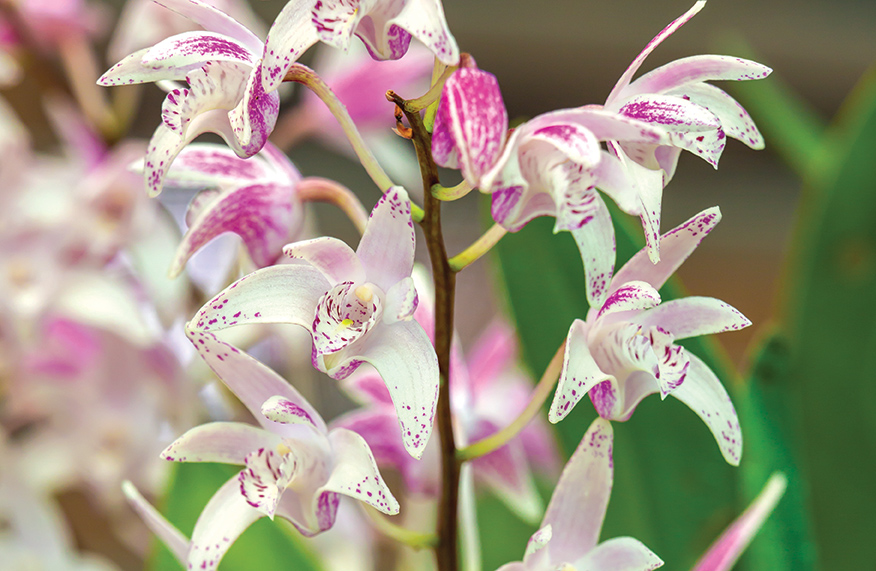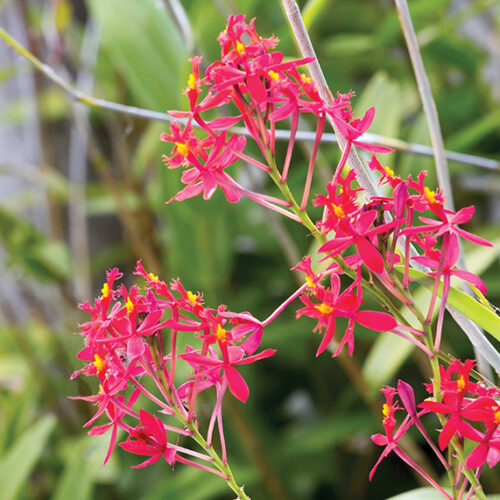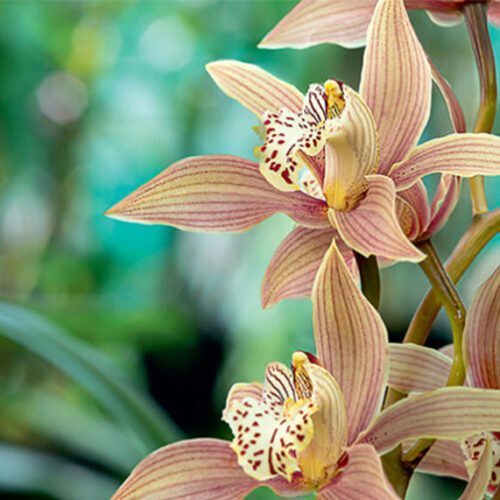Dendrobium orchids
2024-10-10T10:47:44+11:00
Discover the exquisite flowers and easygoing nature of Australian dendrobium orchids.
Spring is the season when native rock orchids burst into life, their long sprays of cream to golden flowers lighting up the bush and gardens of the east coast. They’re easy to spot (and hard to miss on social media!), as they’re often adorning tree trunks at eye height. They don’t look like a ‘typical’ orchid – until you get close enough to see the individual flowers. Perhaps even more surprising is that rock orchids (Dendrobium speciosum) are one of just under 60 species of Australian dendrobiums and most can be grown at home without too much fuss.
Dendrobium is one of the largest genera of orchids, with 1600-ish species. Most hail from the tropics and subtropics and while Queensland – with 50-plus species – has the lion’s share of the Australian contingent, they’re represented everywhere except South Australia.
Native dendrobiums (including hundreds of hybrids) deserve to be more widely cultivated by home gardeners because even though they have quite specific needs, once these are met, they’re not particularly needy! They don’t require a lot of room and, being epiphytes (growing on trees) and lithophytes (growing on rocks), they will thrive in a pot, or can be mounted on a board to hang on a fence, verandah post or tree. This means their unique and often perfumed flowers can be appreciated at eye – and nose – level.
Dendrobiums tend to flower in spring (in response to an increase in daylight hours), but some species such as the fragrant tree spider orchid (D. tetragonum), which is native to Queensland and New South Wales, flower throughout the year, as do hybrids that have this species as a parent.
Flowers and leaves vary considerably, from the spectacular, phalaenopsis-like Cooktown orchid (D. bigibbum) – the floral emblem of Queensland – to the wispy tree spider orchid, the long racemes of the rock orchid and the coveted bottlebrush orchid (D. smillieae).
Do you have an orchid that needs repotting? Read our article Repotting orchids.
Header image by Brent Wilson





